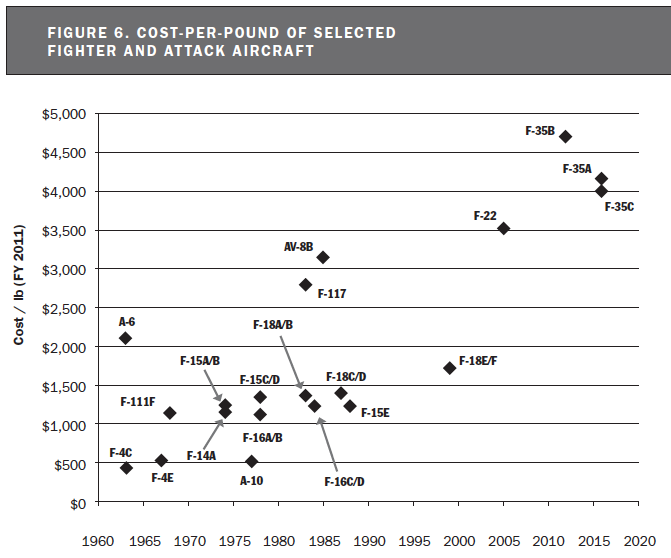Here’s another gem from that recent study on the defense industrial base — or rather the prospective lack of it — by the independent Center for Strategic and Budgetary Assessments. Instead of tracing weapons’ cost growth over time, the folks at CSBA have simply divided each warbird’s fly-away cost (the cost of the plane, minus R&D and assorted other expenses) by how much it weighs, to come up with its cost-per-pound in today’s dollars. “Cost-per-pound may better capture the increasing information and electronic content (computers, software, navigation equipment, displays, sensors, electronic countermeasures and so forth) of modern weapon systems,” the study says. (That, of course, explains why a new iPhone costs $1.2 billion.) Surprise: the newest planes are the most costly, even after wringing out inflation’s impact.
“The defense industrial base is not a free market,” Todd Harrison of CSBA notes, when asked to explain why the cost of complicated consumer electronics continues to plummet while the price of warplanes keeps escalating. “The normal market forces that drive down prices don’t exist in defense.” Perhaps that’s why Congress is now considering capping the total annual compensation of defense executives that can be billed to the government at $694,000. And why Norm Augustine — famed defense titan in both government and industry — is looking prescient in his famous Law 16, handed down nearly 30 years ago: In the year 2054, the entire defense budget will purchase just one aircraft. This aircraft will have to be shared by the Air Force and Navy 3½ days each per week except for leap year, when it will be made available to the Marines for the extra day.
.



